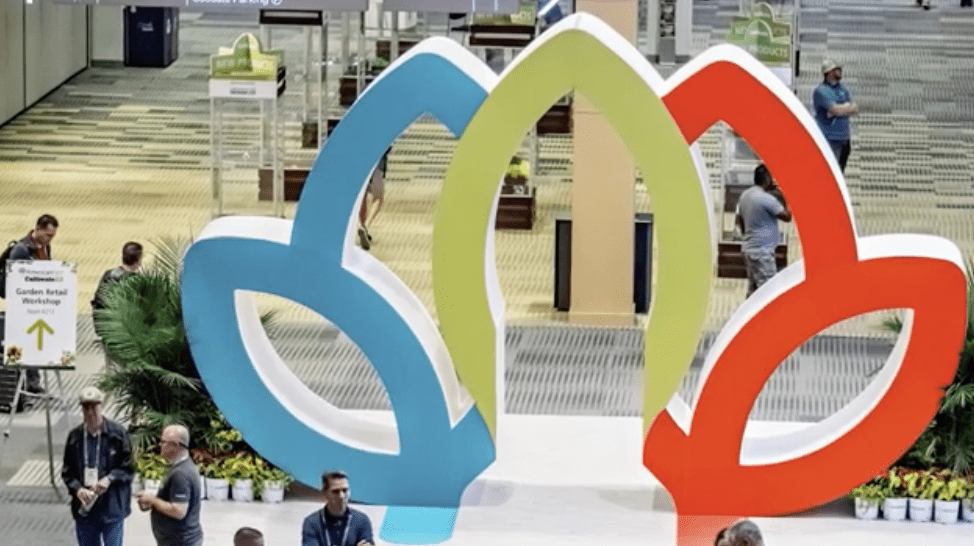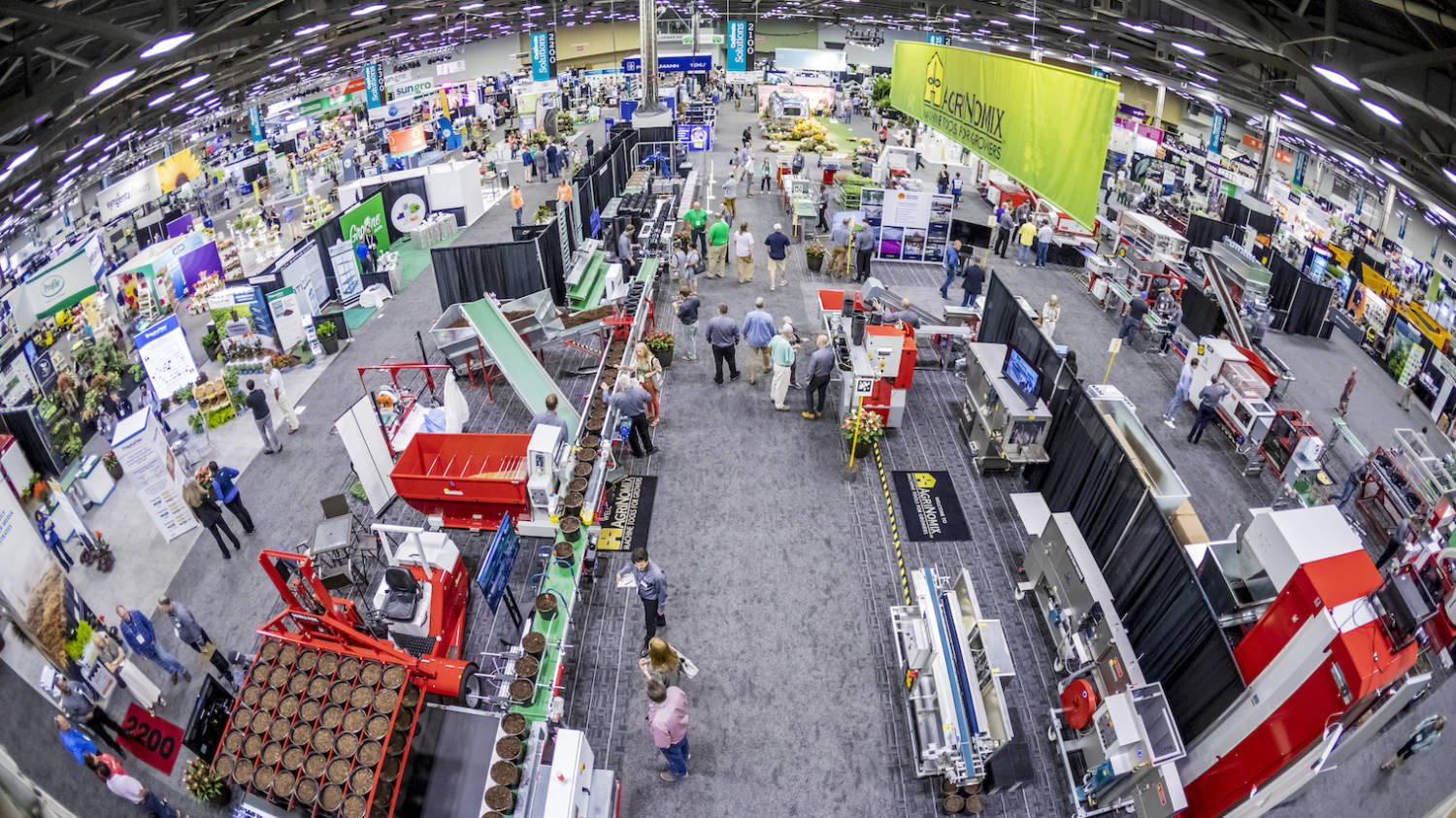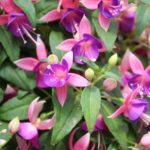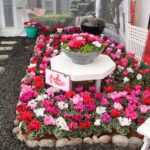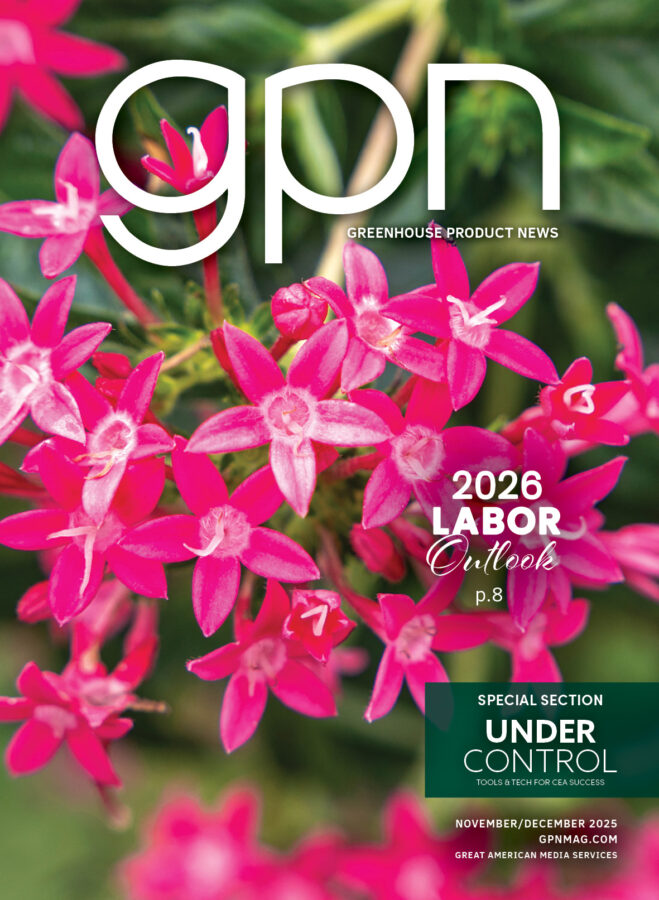
Latest solutions for optimal greenhouse growing
Lighting, especially LED horticulture systems, play a major role in growing. These grow lights offer energy-efficient year-round growing, improved yields, more flexibility, longer fixture lifetime and numerous spectral options. This equals more marketable crops.
“LEDs produce significantly more growth-stimulating photosynthetic active radiation (PAR) light than high pressure sodium (HPS),” said Colin Brice, horticulture key account manager at Signify.
Growers should consider that roughly 34% of the energy of an HPS lamp is used to produce light, while more than 65% of the energy results in radiant and convective heat, he said.
“Using boiler-generated heat to warm a greenhouse is far more economical than relying on heat from lights. Providing heat to your greenhouse environment electrically through HID lighting often costs up to five times more per heat unit when compared to natural gas heating,” Brice said.
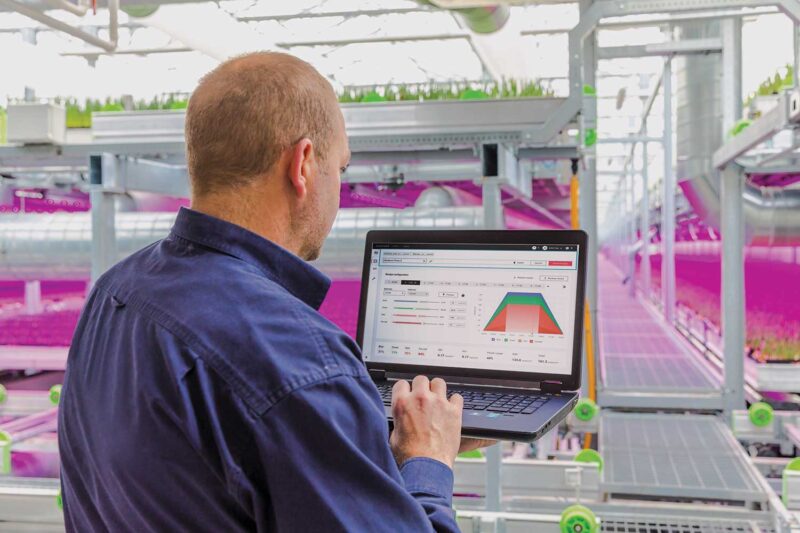
PLAYING WITH COLORS
LED lighting boosts plant quality. Although HPS lights emit a fixed spectrum, LEDs enable the fine tuning of colors to regulate plant morphology.
Blue light acts as a non-chemical plant growth regulator (PGR) to boost plant compactness and reduce chemical PGR usage. Some growers cultivating under Philips LEDs have reported significant reductions in PGR usage after implementing Philips custom light recipes. Blue light also promotes pigmentation and variety coloration, supporting the objective to finish crops with striking coloration within the foliage.
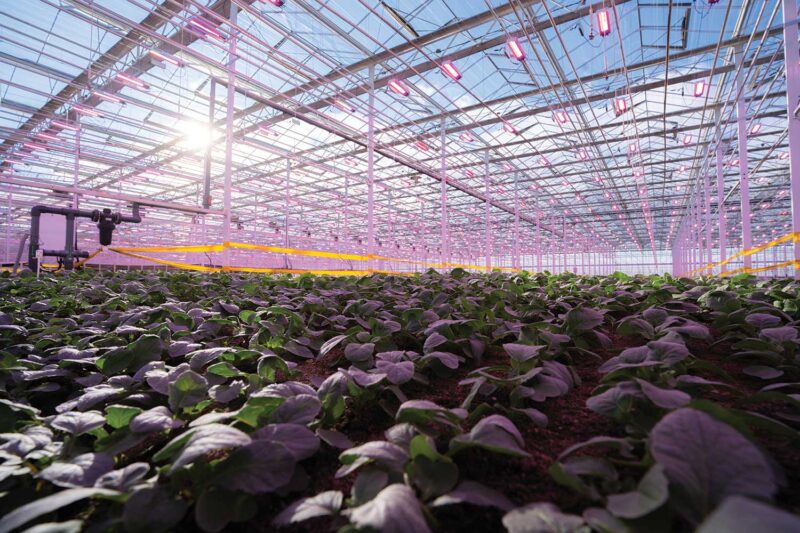
Photo courtesy of Sollum and Les Serres Bertrand.
The use of far-red light can produce an additional yield of more than 10% in tomatoes, depending on variety. The far-red light should be added during the entire photoperiod alongside the standard PAR light. This data is from a shared study conducted in the Netherlands between Signify, WUR and Nunhems.
The best result was a 16% increase in yield; however, major differences between varieties make the outcome uncertain for growers. The 20-week study showed that all far-red treatments gave more sink strength, which means that more sugars flow to the fruits. However, this only led to a significant increase in harvest if the far-red was dosed during the entire photoperiod — in this case 16 hours a day.
Greenhouses also hold a lot of heat. Research has shown that ambient temperature at the fixture level can reach up to, and sometimes exceed, 104° F.
“This is important because if the luminaires reach temperatures that are higher than designed, it could lead to shorter lifespan or product failure,” said Rachelle Winningham, North America product marketing manager at Signify.
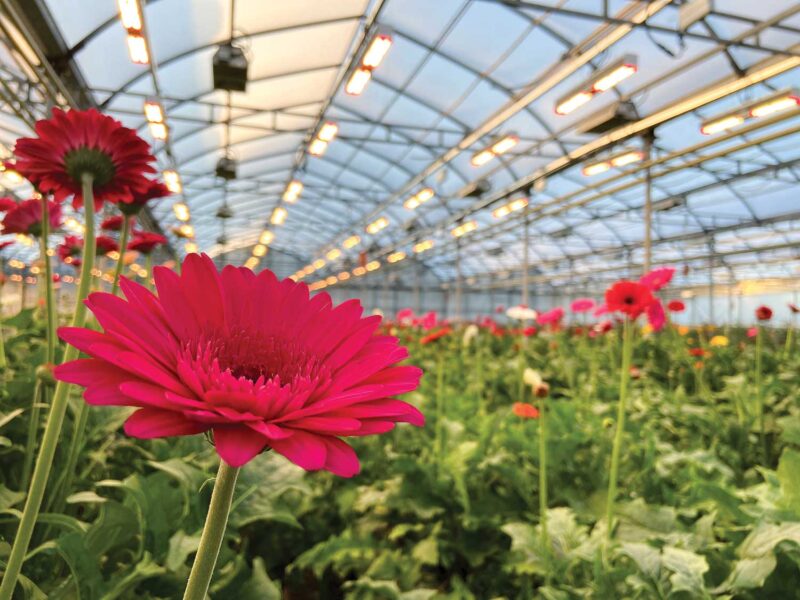
LIGHTING THE WAY
Philips Horticulture LED Solutions was established in 2007 when Signify began researching, designing and testing LED lighting. The company channels a lot of resources into research to ensure that its products are optimized for high-wire tomatoes, cucumbers and peppers; lettuce and leafy greens; soft fruits; and some ornamental crops including potted plants, cut flowers, annuals and perennials.
Its LED luminaires include GreenPower toplighting linear, GreenPower toplighting compact and Philips toplighting force.
“Offering a range of solutions, static to dynamic, with a broad range of recipe options, allows growers — regardless of operation size, crop or type of greenhouse, from low-tech to high-tech — to take advantage of the benefits of LED lighting,” said Michael Hanan, North America horticulture sales manager at Signify.
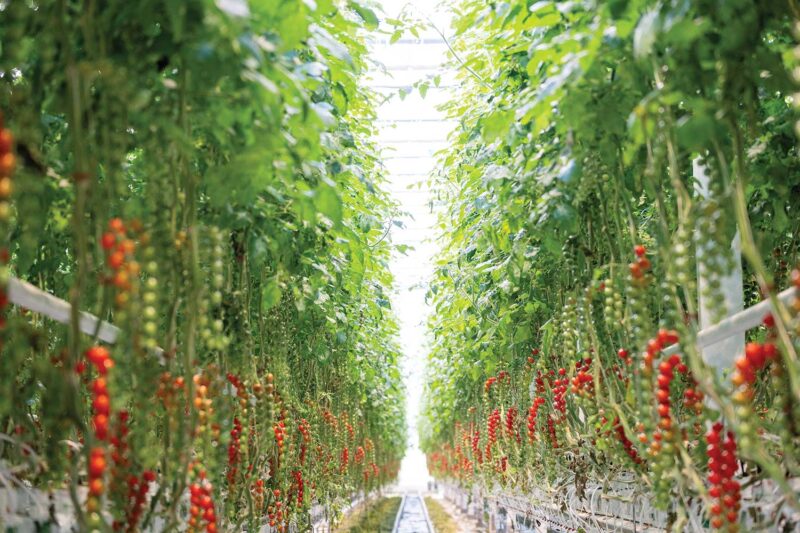
Philips also offers LED Production Module, used for multi-layer growing, LED Interlighting for high-wire crops and Flowering Lamp. Its Philips GrowWise Control System enables dimming and spectral control of Philips luminaires.
This allows growers and researchers to create and run custom LED light recipes with Philips luminaires to meet the needs of specific crops, which can enhance quality, increase yields and reduce energy usage.
RECENT ADDITIONS
In 2023, Philips introduced force 2.0. This generation of toplighting offers standard and quadro beam angles. Dimming can be managed via a wired or wireless connection. The product offers superior color control, which can result in crop improvements and efficiency gains.
Philips GrowWise smart spectrum was recently showcased at GreenTech in Amsterdam, Netherlands. This knowledge-based algorithm was developed to boost growing practices by automatically adjusting lighting to real-time conditions. The reliable, user-friendly spectrum optimizes an operation’s spectrum based on sunlight irradiation and helps reduce energy usage and improve yields while saving time.
SPECTRUM CONTROL IN CEA
A decade ago, Sollum Technologies introduced its LED lighting to the CEA market. Its fully programmable and reprogrammable solution empowers growers to replicate and modulate the full spectrum of natural sunlight in real time, adapting precisely to each crop’s needs at various growth stages.
“This flexibility ensures that crops receive the right light intensity and spectrum, regardless of their native environment,” said Matt Bonavita, vice president of sales at Sollum Technologies.
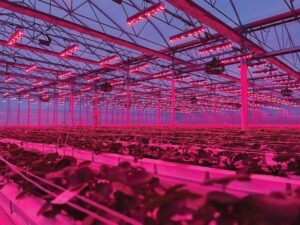
The company offers a dynamic LED grow light solution designed for CEA and greenhouse production, providing growers with real-time dynamic spectrum control, unlimited zoning capabilities, customizable light recipes and smart automation.
Growers typically get increased crop yields, enhanced produce quality and consistency, energy savings of up to 40% to 60%, and reduced environmental impact through minimized waste heat and optimized light usage.
Sollum’s solutions effectively support a range of crops, including leafy greens, herbs, tomatoes, cucumbers, cannabis and flowers. Whether it’s optimizing growth for leafy greens or adapting lighting for cannabis, they’re versatile and designed to meet the specific needs of various crops and environments.
Another perk: dynamic spectrum control. Adjusting the light spectrum to match each plant’s growth stage enhances photosynthesis and growth. There are substantial reductions in energy consumption and associated costs. Custom light recipes lead to more consistent, high-quality produce, and sustainability is achieved via reduced CO2 emissions through energy optimization.
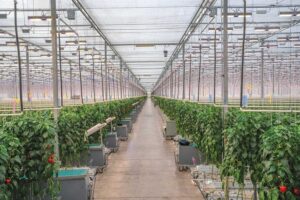
Growers also have flexibility and control through tailored lighting schedules that suit different crops and growth cycles. These ensure optimal growing conditions.
Other resources at Sollum include a proprietary SUN as a Service (SUNaaS) cloud platform. It enables growers to remotely manage lighting using real-time monitoring, precise adjustments and analytics. Optimal efficiency can be achieved while managing energy costs.
“This is part of what makes Sollum unique. We’re not just providing lights; we’re offering an entire solution that evolves with the grower’s needs,” said Bonavita.
DATA-FOCUSED FUTURE
Industry experts believe that the future of CEA lighting and greenhouse production will continue to focus on smarter, more efficient systems that integrate seamlessly with farm management software for data-driven optimization.
“We’re enhancing our systems with deeper automation, AI-driven insights and integration with other technologies. We’ll continue innovating by improving energy efficiency and expanding our system’s capabilities for more crop types and climates,” said Bonavita.









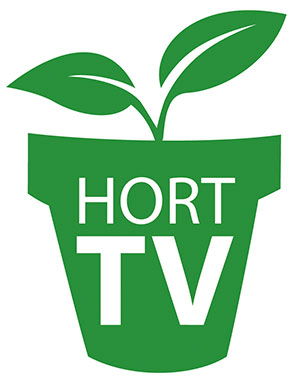 Video Library
Video Library 